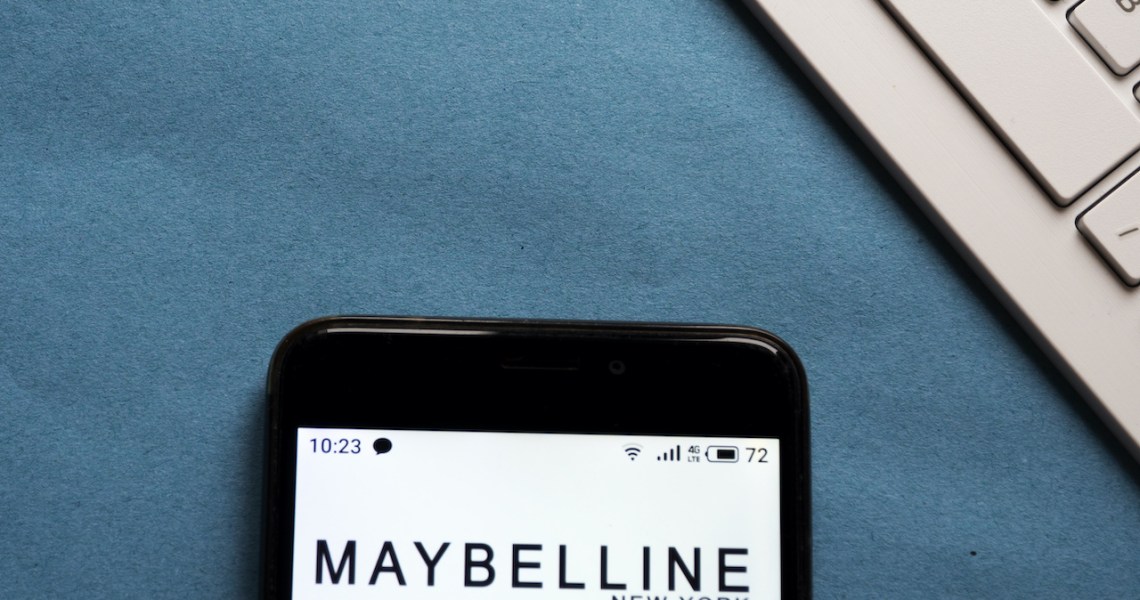The story was originally published on Glossy’s sibling publication Digiday.
First it was the giant Maybelline mascara wands and eyelashes seemingly appearing on London transportation last month. Then, it was a hologram of a giant Barbie breaking out of its box two weeks ago in Dubai. Now, it’s a Maybelline mascara tube-shaped bus roaming the streets of NYC.
Welcome to the era of what’s being called faux out-of-home advertising: Hyper-realistic, augmented reality or CGI-based digital ads that appear as real-world, OOH activations. Marketers are starting to use faux OOH to drum up buzz for their brands and stand out in a crowded online marketplace.
“It was a way to honestly disrupt the environment and get people talking, and wondering, ‘Is it real or is it not?’ That’s really the purpose of it all,” said Fernando Febres, vp of marketing for Maybelline U.S., who oversees the makeup brand’s eye category.
Maybelline, which is owned by L’Oréal, started its experimentation with faux OOH around the launch of its new mascara product back in March via a collaboration with Ian Padgham, animator and founder of video production company Origiful. Padgham is the creator behind the viral London tube train with giant eyelashes driving through a giant mascara wand as well as the mascara tube-shaped train in NYC. (Financial agreement details were not disclosed.) The surrealist video creator is also responsible for the Jacquemus bags on wheels seen in early April, as reported by Digiday’s sister publication Glossy.
Meanwhile, the giant Barbie in Dubai is the work of Eye Studio, a creative content and social media agency based out of Saudi Arabia and the United Arab Emirates. (Eye Studio did not respond to an interview request by press time.)
Reach goes further with faux OOH
As far as agency executives are concerned, the AR and CGI-powered marketing stunts speak to what the industry can expect from the future of augmented and virtual reality marketing. Unlike traditional OOH billboards or even the increasingly popular digital out of home (DOOH) kiosks, so-called faux OOH lives online, expanding its reach far beyond the local shoppers traditional OOH is limited to.
“‘Faux OOH’ presents marketers with a limitless advertising ‘format,’ because it eliminates the considerations that come with budgets, resources and that pesky concept of physical reality,” said Leslie Lee, senior vp of marketing at programmatic DOOH platform Vistar Media.
Plus, it’s more cost effective, per Febres. The Maybelline executive declined to comment on specific ad spend figures, but said paying for faux OOH doesn’t come with the expenses of a physical location, people to manage the production or building permits or set materials of a traditional out of home ad. Creators who produce these ads operate by the same rules as photographers and videographers as far as permits and usage rights go, agency execs say.
Last year, Maybelline spent more than $91 million on advertising, according to Vivvix, including paid social data from Pathmatics. By Q1 of 2023, that figure was more than $23 million and from April to June of this year, nearly $11 million.
The scale and reach of digital activations vs. traditional OOH is perhaps the biggest draw as far as marketers are concerned. “If we had done the same activation in traditional out-of-home, we probably wouldn’t have gotten the eyeballs that we did,” Febres said.
AR/VR re-sparks ad interest
Over the years AR and VR has come a long way, especially on the heels of the metaverse, said Brian Hutchinson, vp of disruptive technology and innovation at The Mars Agency. Meaning, as the technology and tools to produce surreal or faux OOH become more accessible, the crossover between digital and physical activations is likely to become much more common — less of a new tech trend and more of a means to drive traffic and sales, he said.
And as accessibility increases, as does advertisers’ interest. Advertisers are getting more creative with OOH ads, leveraging things like the Las Vegas Sphere, fortune cookies and digital taxi toppers. Companies like Meta and Google are spending more to build out AR and VR tools. In April, agencies were reportedly partnered with sports teams and entertainment venues, leveraging mixed reality experiences to engage fans and consumers. Worldwide mobile AR revenues are expected to double from $18.67 billion this year to $39.81 billion in 2027, according to Insider Intelligence.
“It’s like any technology,” Hutchinson said. “Once you start to get scale, and you start seeing that technology become frictionless and seamless, where it becomes a way to deliver a message — once you attain that, that’s when brands start to take notice.”
Ethics remain murky
However, the ethics around faux OOH remain unclear as much of it operates in a gray area, leaving shoppers unclear as to whether or not these activations exist online or in real life. Meaning, brands should be careful that these advertising activations don’t cause unintended harm or unnecessary confusion, says Vistar Media’s Lee.
Historically, Lee added, OOH ads have had to adhere to careful creative review, content regulations and sometimes investing back in the communities where the ads are located.
“Faux OOH’ runs the risk of causing concern if it showcases ideas that would violate those practices in the real world,” Lee said. British Airways, for example, was called out at the Glastonbury music festival in June for a faux OOH ad that led people to believe the music festivals’ “careful curation” of advertisers had been broken, per Lee.
For now, the Maybelline team, at least, isn’t too concerned about pushback to its surreal activations as the brand often cheekily responds to comments asking if the activation is real.
“As much as we can continue this excitement and confusion between real and not real, if it continues to be surprising, we will continue to do it,” Febres said. “If it becomes too expected, we’ll probably switch to something else.”




